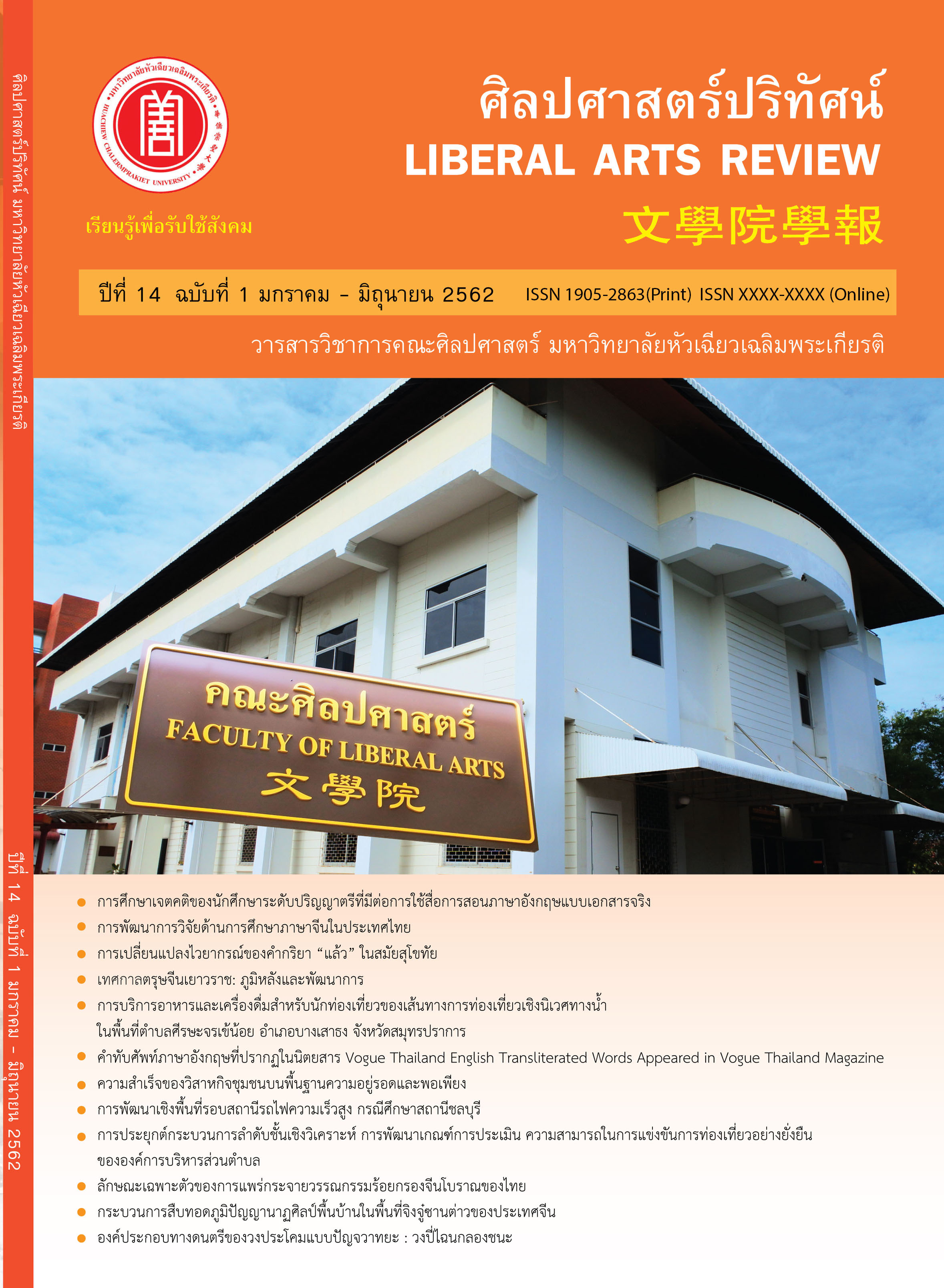The research of the grammaticalization of Thai verb ‘lɛ́ɛw’ in Sukhothaiperiod
Keywords:
grammaticalization, verb ‘lɛ́ɛw’, Thai language in Sukhothai periodAbstract
This research mainly studies the grammaticalization of Thai verbs‘lɛ́ɛw’ during Sukhothaiperiod.This research mainly finds the corpora from historical inscriptions to explain the grammaticalization of the Thai verb‘lɛ́ɛw’inSukhothaiperiod.The main result of the research showed is a trend of diversification in the word meaning. From the time of Sukhothai, the Thai verb‘lɛ́ɛw’ is relatively high in syntactic function evolution. In addition to being used separately as an ending verb, it can also be used as participle, universal quantifiers and aspect markers
References
จตุพร ศิริสัมพันธ์. (2548).ประชุมจารึก ภาคที่ ๘ จารึกสุโขทัย.กรุงเทพมหานคร:สำนักหอสมุดแห่งชาติกรมศิลปากร.
Bernd Heine,&Tania Kutevazh.(2002).语法化的世界词库.แปลจากWorld Lexiconof Grammaticalization.แปลโดย龙海平、谷峰.北京:世界图书出版公司.
黄阳,郭必之.(2014).壮语方言“完毕”动词的多向语法化模式.民族语文,(01),21-32.
岩温罕.(2017).傣泐语-泰语的三事事件表达.云南民族大学学报 (哲学社会科学版), 34(02),156-160.
杨文学.(2017).泰语动词dai~(41)的语法化初探.玉溪师范学院学报, 33(01), 57-60.
苏艳飞.(2011).壮泰语被动标记语法化探讨.语文学刊,(05),60-63.
潘立慧.(2016).汉语“了”在壮语中的两种特殊用法——作为全称量化词 和最高程度标记.柳州职业技术学院学报,16(02),74-77.
Downloads
Published
How to Cite
Issue
Section
License
บทความที่ได้รับการตีพิมพ์เป็นลิขสิทธิ์ของวารสารศิลปศาสตร์วิชาการและวิจัย
ข้อความที่ปรากฏในบทความแต่ละเรื่องในวารสารวิชาการเล่มนี้เป็นความคิดเห็นส่วนตัวของผู้เขียนแต่ละท่านไม่เกี่ยวข้องกับมหาวิทยาลัยหัวเฉียวเฉลิมพระเกียรติ และคณาจารย์ท่านอื่นๆ ในมหาวิทยาลัยฯ แต่อย่างใด ความรับผิดชอบองค์ประกอบทั้งหมดของบทความแต่ละเรื่องเป็นของผู้เขียนแต่ละท่าน หากมีความผิดพลาดใดๆ ผู้เขียนแต่ละท่านจะรับผิดชอบบทความของตนเองแต่ผู้เดียว




